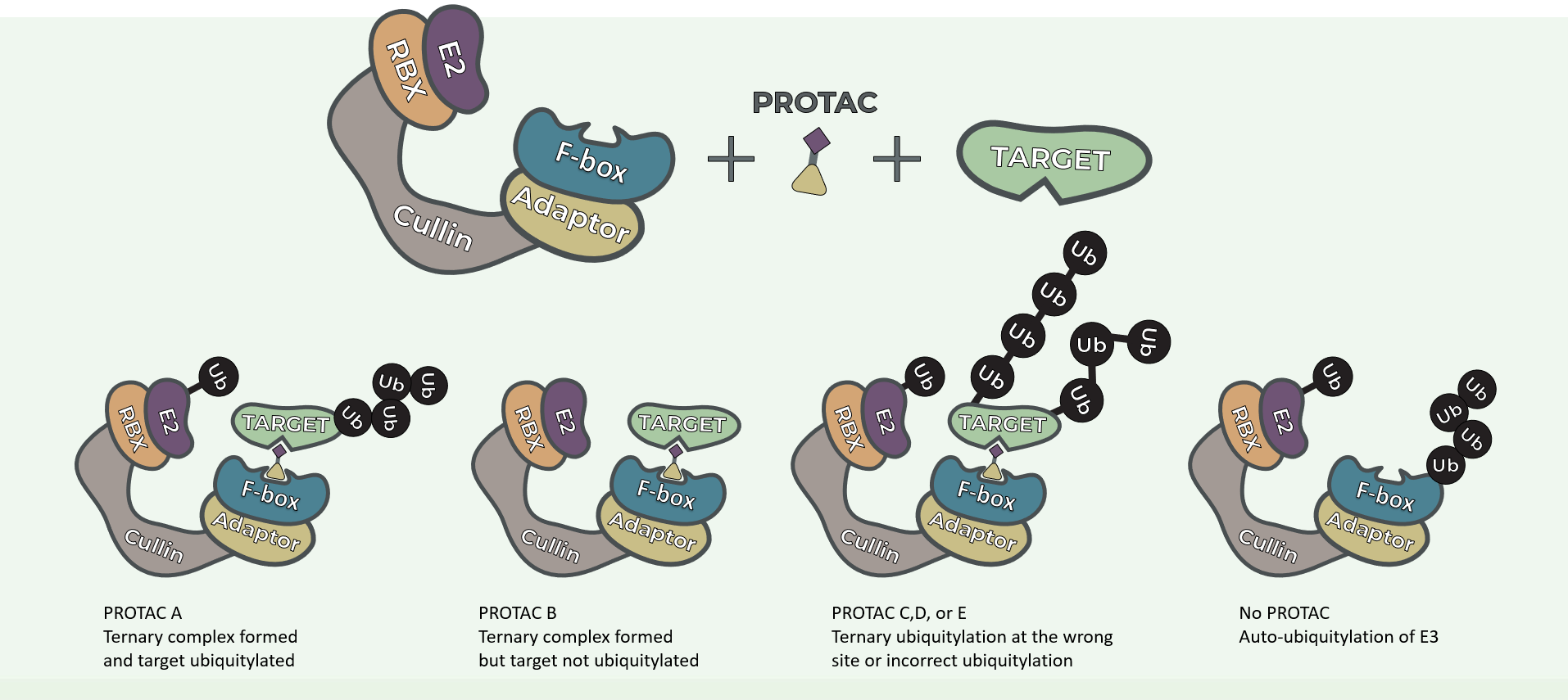PROTAC® Strategy
[vc_row type=”in_container” full_screen_row_position=”middle” scene_position=”center” text_color=”dark” text_align=”left” overlay_strength=”0.3″ shape_divider_position=”bottom” bg_image_animation=”none”][vc_column column_padding=”no-extra-padding” column_padding_position=”all” background_color_opacity=”1″ background_hover_color_opacity=”1″ column_link_target=”_self” column_shadow=”none” column_border_radius=”none” width=”1/1″ tablet_width_inherit=”default” tablet_text_alignment=”default” phone_text_alignment=”default” column_border_width=”none” column_border_style=”solid” bg_image_animation=”none”][vc_column_text]The PROTAC® strategy consists of artificially hijacking the components of the UPS in order to get rid of unwanted and damaged proteins. It is based on the use of a PROTAC drug that contains two functional groups: one that binds to the target protein and one that binds to an E3 ligase.

Bringing these two entities in proximity to each other theoretically leads to the polyubiquitylation and proteasomal degradation of the target protein (PROTAC A- see below). However, with many moving pieces this scenario does not always play out PROTAC B, C, D, E – see below).

Unfortunately, the PROTAC discovery strategy presents its own challenges and pitfalls:
- The PROTAC molecule does not bind to its intended partners (no PROTAC).
- Bringing the E3 ligase and the target protein close to each other does not always lead to ubiquitination-mediated degradation (PROTAC B).
- The PROTAC molecule leads to the ubiquitylation of the target protein but at the wrong site and/or with the wrong polyubiquitin linkage PROTAC C, D, or E)
Therefore, LifeSensors developed high-throughput tools that allow for the monitoring of both the polyubiquitination and degradation of a target protein.
PROTAC is a registered trademark of Arvinas Operations, Inc., and is used under license.
Back to cell-based services
[/vc_column_text][/vc_column][/vc_row]
